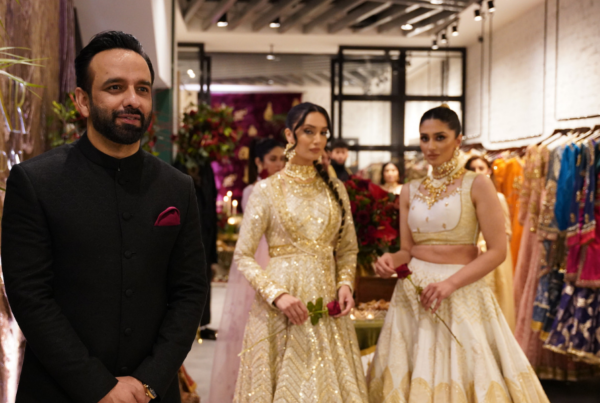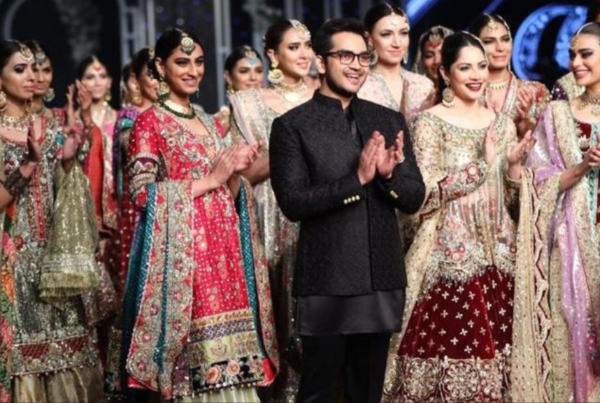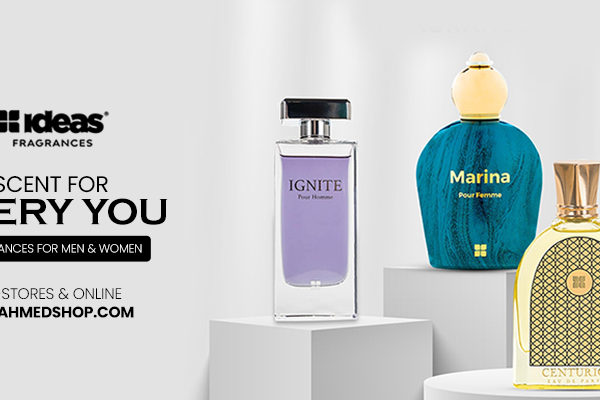The PFDC Sunsilk Fashion Week held last week looked better than ever but without a concrete business model it remains to be a flash of beauty at best.
Out of the twenty-five collections shown at PFDC & Sunsilk Fashion Week, an impressive twenty plus added either elements of handcrafted couture, well-defined trends in street wear or high voltage drama to the value of Pakistani fashion. As that value was emitted out to the world via the media – local and international that included Telegraph, Times London, IANS and Elle India – it built recognition for this country’s fashion industry as it has never known before.
Recognition, initially, is the best thing Pakistan’s infant industry could hope for and the Pakistan Fashion Design Council has been creating that awareness through commitment and consistency. It has been hosting fashion weeks at regular six-month intervals since it started last year and it has integrated Alexandra Senes, fashion consultant from Paris, in the process. Her advice is valued and her contribution is most visible in the selection of collections showcased. PFDC’s other big achievement has been in developing a synergy with the Pakistan Institute of Fashion Design and giving talented students a launch pad. It announced on the last day of fashion week that five of its participating members would be selected to represent Pakistan at Pret a Porter, Paris this August.
All this is more than what the council could have hoped to achieve within a year of its fashion week initiation. That said, the quicker it ascends to certifying the business of fashion, the better.
The business of fashion equates directly to sales and one would need a degree in Orienteering to find/buy many of the labels that show regularly at the PFDC fashion week: Ali Xeeshan, Teejays, Sublime, Zara Shahjahan, Sahar Atif, Fahad Hussayn and Muse are some examples. Those with the strong business models, like HSY, Karma, Nickie Nina or Asifa Nabeel, knew the ropes well before fashion weeks began in Pakistan. As for the PFDC fashion week debutantes, many are still not even registered taxpayers.
Someone like Prabal Gurung, New York Fashion Week’s biggest success story this year, was stocking all over the world before he made a breakthrough at fashion week. Our designers are working the system in reverse and one wonders whether they will ever make it big despite the breakthroughs they keep making with impressive collections.
“There are two ways of making it big in fashion,†Hilary Alexander spoke to Dawn Images between shows. Alexander is one of the world’s top three most respected fashion commentators. “One is to do what Prabal Gurung did, or even Manish Arora if you like. He showed in London, Paris, all over before he just got the job as Artistic Director of Paco Rabanne. To do that you burn your boats, head off abroad, make huge investments and in ten years you make it big if you’re lucky. It’s a huge risk.â€
“It’s hugely important for fashion people to have a head for numbers or a partner who is handling the business side of things,†she adds on the value of business. “You need someone who understands contracts, distribution, manufacturing and buying fabric because a designer cannot do all that and concentrate on the creative side. So it is quite tricky.â€
“What the PFDC should do,†she concludes, “is perhaps build an alliance with London’s Central St Martins and send six of it’s best students across every year; students like Mohsin, who has a lot of talent, and also Zaheer Abbas who I thought was very, very, very good. His cloaks were beautiful. And also Karma. I know Lahori girls like bling but if you took away the bridal bling and made it look less like a Christmas tree, you’d have fun pieces that could be worn anywhere in the world.â€
The PFDC says that it is working towards building fashion as a business for designers and has tycoons like Avais Mazhar (Angora Textiles), Seema Aziz (Bareeze) and Shoaib Shafi (Crescent Mills) on board. But what this board has achieved so far in terms of generating sales, exports, merchandizing and even employment is ambiguous. Something as simple as an order catalogue (provided by Malaysian designer Eric Choong who showed at the Fashion Pakistan Week in Karachi last year) is still not made available by designers at fashion week. How is one to inquire about a garment without a serial number, item list etc?
An effort the council did make was in setting up exhibition stalls for designer-buyer interaction. There were two foreign buyers at the event: Nalini Aubeeluck from Mauritius who appreciated Sadaf Malaterre’s collection as something “that women would love back home†and Maimona Tahair, a Middle Eastern buyer, representing forty Anotah boutiques across the Gulf. This chain of stores has been retailing Indian and Turkish fashion brands for the last thirty years.
“I’m happy I’m here because some of the stuff is good and I will be placing orders with Nickie Nina, Sublime, Muse, Khaadi, Fahad Hussayn and Khaadi, amongst some others,†Tahair spoke to Dawn Images after the shows. She explained that ‘placing orders’ meant buying the collections instead of ‘stocking’ them as is the practice amongst local retailers.
“I am taking some of the stuff straight off the runway and am asking designers to modify others to make them more suitable for the Gulf. Our minimum order is 200 pieces per style, per colour. We will be paying 30 per cent upon order and the remaining 70 per cent when the shipment moves.â€
Seeing those orders through is going to be a daunting task for most of the mentioned designers who have still not managed to operate out of their comfort zones. And if they fail, the PFDC fashion week’s credibility and hard work will fly out of the window.
Putting a fashion week together is a lot of hard work and the PFDC has been making substantial efforts in the right direction. But unless the council starts providing numbers on the business it is generating, it’s efforts will eventually start falling flat. One would like information on the Hang Ten deal announced a year ago, in which PFDC members were supposed to stock at forty outlets worldwide. One would like to know why the PFDC Boulevard in Karachi hasn’t been doing well and appears to have shut down recently. It is very easy to make grand announcements at the end of every fashion week but unless these issues are addressed, the millions spent on executing a three day event – 1.2 million rupees per day was spent on the venue alone – will remain a marketing exercise and nothing more. Collections will find their way to the glossy pages of magazines and nowhere else. Till then the PFDC’s fashion week will remain as superficial as skin deep.
Fashion week footnotes
* Most of the collections shown at fashion week were impressive. However, the disaster that almost struck with Rizwanullah’s collection – he was reportedly planning to send his male models out in innerwear until the council intervened ten minutes before his showing and covered them up – needs to be avoided by advanced and thorough screening.
“Each time I come I’m thrilled by the amazing embroideries and intricate construction going down the catwalk, but I’m also embarrassed for some designers that send out sub par work – cheap fabric and unfinished details that have no place in a professional fashion show.†Michelle Stockman, video journalist who has covered New York and Delhi fashion weeks.
* It is unclear what determines the designer slotting. Sublime’s light and fresh collection was very clearly a show opener as opposed to a show finale, whereas Nickie Nina, who always open fashion week with couture pieces, should have been pushed to a later time slot.
* It is equally unclear why certain designers – like Karma and HSY – are allowed grand productions and longer shows. Would the opportunity of showcasing forty garments instead of twenty be offered to anyone who could afford it?
“We can plan shows better if designers show us their collections well in time.†– event organzier Frieha Altaf, who also incorporated a live qawalli in Asifa Nabeel’s show.
* Fashion week timings were unprofessional as evening shows would begin at eight and end at eleven. Ideally they should have started at five, ended at eight and then moved over to the dinners and after parties.
“Fashion has surely come a long way in Pakistan and the organizers have improved as well but the show timings were horrendous! Secondly, there has to be some provision of food/snacks for the media. All fashion weeks in the world have that!†– Shilpa Raina, Senior Reporter IANS
* The voile shows, introduced as afternoon attractions, were a complete waste of time, resources and energy. Voile does not need to be marketed at fashion week; it already has an abundant market in Pakistan. If the PFDC is expanding to fabric and textiles then it should plan a textile fair on the Heimtextil model.
* There was no media centre/facility for the press, because of which foreign and local journalists found it impossible to file stories on time.
* Lahore’s fashion week has still not managed to outline seasonal or style trends. Likewise the hair and makeup, executed by Sabs (women) and Khawar Riaz (men) may have been convenient but in no way did it define a look for the season.
* Local buyers felt they were treated more like the competition rather than essential fashion week components. Zahir Rahimtoola (Labels) decided to sit fashion week out and Zeba Husain (Ensemble) flew in just to support HSY who stocks at her boutiques.
“I received a call on March 26 from a lady stating that she was calling from PFDC and wanted to know the number of passes I required for the show. It was too late in the day as I had already made other travel plans. I would have changed my plans if the show management had the courtesy of giving enough notice rather then asking me as to the number of passes I required on the 26th for an event taking place three days later. Furthermore, Fashion Weeks in Pakistan at the moment are more about image building rather than the actual conduct of business. Being the first and one of the largest fashion retailers we carry a number of designers showcasing so will in any case receive the new collections.†– Zahir Rahimtoola,  fashion retailer






